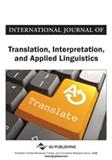
国际翻译与应用语言学期刊(英文)(International Journal of Translation, Interpretation, and Applied Linguistics)(国际刊号) 知网目次
- AMI入库
- 主管单位:
- 主办单位:
山东大学(威海)翻译学院
- 国际刊号:
2575-6974;EISSN 2575-6982
- 国内刊号:
- 学科分类:
- 字数:
-
- 有无基金:
- 周期:
国际号刊-半年刊
- 特殊属性:
外文期刊
- 电话:
- 邮箱:
caroline_zhaowei@sina.comfanlin@bfsu.edu.cnmuyy@hfut.edu.cn(官网邮箱)
- 复合因子:
0
- 综合因子:
0
- 收录:
知网目次
- 级别:
AMI入库
期刊简介
《国际翻译与应用语言学期刊》期刊已被查看:698 次
更新频次
单位占比
一作占比
投稿指南
1、该刊只有国际刊号。
2、投稿方式:在线投稿。
3、官网网址:
https://www.igi-global.com/journal/international-journal-translation-interpretation-applied/175203
4、山东大学人文社科期刊网:
http://rwskjournals.sdu.edu.cn/kwdh/gjkwdh/gjfyyyyyyxqk1.htm
5、官网邮箱:caroline_zhaowei@sina.com
fanlin@bfsu.edu.cn
muyy@hfut.edu.cn
6、出刊日期:半年刊,一年出版2期。
2021年9月27日星期一
《国际翻译与应用语言学期刊》简介
【山东大学人文社科期刊网信息】
《国际翻译与应用语言学期刊》简介
自2018年4月起,山东大学翻译学院专家与美国IGI Global出版社合作,负责主编该出版社旗下的《国际翻译与应用语言学期刊》(The International Journal of Translation, Interpretation, and Applied Linguistics)。该刊为全英文国际学术期刊,与IGI Global出版社有合作关系的世界各地高校图书馆均有收录。
该期刊为半年刊,于2019年4月正式创刊,至目前已经正式出版8期。该刊2019年进入谷歌学术(google Scholar)检索,2020年被中国知网(CNKI)全文收录。2019年7月,该刊获得山东大学国际“种子基金”项目的经费支持,实现了完全公开获取出版。所刊载论文可全文免费下载,有利于提升出版物的阅读量、引用率,促进期刊在全球范围内的自由传播,也有利于在世界范围内提升山东大学在本学科领域内的影响力。
该刊采用国际化合作办刊模式,由翻译学院主编负责组建编委,全球征稿,按期出刊。美国IGI Global出版社为办刊提供出版平台和技术支持,拥有期刊版权。该刊做严格信守学术伦理,坚持国际学术规范,确保双盲评审的公正透明,并向作者提供细致专业的修改意见,为国内外翻译及语言学专家学者提供了一个公正自由的学术发表平台。目前需要长期的稳定的经费支持,以便进行长期的规划。
纸质刊号ISSN: 2575-6974
电子刊号EISSN: 2575-6982
期刊官网
https://www.igi-global.com/journal/international-journal-translation-interpretation-applied/175203
《国际翻译与应用语言学期刊(英文)》
(International Journal of Translation, Interpretation, and Applied Linguistics)投稿指南
【官网信息】
International Journal of Translation, Interpretation, and Applied Linguistics (IJTIAL): Guidelines for Submission
Mission
Prospective authors are invited to submit article manuscripts for possible publication in IGI Global Journals.
Types of Submissions
•Empirical research
•Conceptual models
•Theory building
•Innovative methodologies and applications
•Case studies
•Book reviews on selected books or textbooks dealing with values, concepts, and
•applications of specific research topics.
Originality and Copyright
Please note that all submissions must be original, unpublished, and not under the review of any other publication. Upon submission to an IGI Global Journal, it is assumed that the contents of any submission are not held by the copyright of any other publication or under review by any other publication.
The following illustrates the IGI Global Originality and Copyright policy for submissions:
1. Originality of manuscripts: Only original and previously unpublished article manuscripts will be accepted for publication. Authors of standard subscription-based article manuscripts (non-open access) are asked to sign an Author’s Warranty and Transfer of Copyright Agreement that requires confirmation that the manuscript is original and has not been submitted for potential publication or previously published elsewhere. Also, all copyrights, including translation of the published material into other languages, are reserved by the publisher, IGI Global. Upon transfer of the copyright to the publisher, no part of the manuscript may be reproduced in any form without written permission of the publisher.
Note: Authors of article manuscripts submitted under open access will be requested to sign only an Author’s Warranty confirming that the article manuscript is original and has not been submitted for potential publication or previously published elsewhere and the copyright will be retained by them. IGI Global open access journal publishing offers authors the Creative Commons Attribution 4.0 International (CC BY 4.0) licensing arrangement. The copyright for the work remains solely with the author(s) of the article manuscript.
2. Revised manuscripts. IGI Global does not publish article manuscripts that are considered “revised” or largely based on previously published works (i.e., published conference proceeding papers, etc.). Manuscripts may include intellectual property, but cannot include verbatim content that is not original or has been previously published.
3. Acquiring permission for copyrighted images. Any permission from other publishers for the use of images that are previously published must be accompanied by written permission from the original publication/publisher in which the copyrighted image was published. Copyrighted images include any image (figure, table, graphic, etc.) appearing in any publication and/or any images that are associated with an organization in which permission is required [e.g., a screenshot of a page from a company’s Web site, a screenshot of a scene from a video game, etc.]. For specific instructions, please refer to the final article manuscript submission guidelines: www.igi-global.com/publish/contributor-resources/
Any copyrighted image must include indication in the caption of the original source of the image and that it is being used with permission of the copyright holder. Copyrighted image captions should appear as:
Figure 1. [insert caption here]. (© [insert copyright year here], [insert copyright holder’s name here]. Used with permission.).
In the case of an Adapted Image that is loosely based on a copyrighted image, the image must be accompanied by a caption that indicates the original source. Adapted copyrighted image captions should appear as:
Figure 1. [insert caption here]. (Adapted from [insert source of copyrighted image here]).
Adapted copyrighted images should be investigated by the author to ensure that the original source is adequately indicated as the original publisher requires.
Acquiring image permissions can take extended periods of time and the author should plan to begin permissions process upon submission of the article manuscript for assessment.
4. Permission fees. If the copyright holder of an image is requiring a one-time permission fee, IGI Global will agree to publish the figure, provided that the author pays the fee. However, IGI Global will not agree to publish any copyrighted image for which a permission fee is required for each subsequent publication of the image.
5. Trademark use. All trademark use within the article manuscript must be credited to its owner, or written permission to use the name must be granted.
Style
Article manuscripts should include a thorough literature review and adequate reference citations to support the arguments and methodology of the research study (article manuscripts should include approximately 25-30 references to assert a high level of rigor). All material that is paraphrased or quoted from another source must be substantiated with an in-text reference citation. Article manuscripts and references must strictly follow APA (American Psychological Association) style (The publisher may return article manuscripts for revision to format the article manuscript and references in APA style if formatting is not correctly applied. Note that excessive revisions will delay the production process, and ultimately, the release of the issue.). References should relate only to the material that is cited within the content of the article manuscript and may not include any bibliographic references that do not associate directly with the content of the article manuscript. References should be in alphabetical order and not numbered in the text or in the reference list. Please do not include any abbreviations.
Consulting the APA style manual (https://apastyle.apa.org/products/publication-manual-7th-edition) is highly recommended for compiling article manuscript submissions. The APA style manual ‘frequently asked questions’ and ‘helpful tips’ may also be found at: www.apastyle.org/faqs.html and www.apastyle.org/previoustips.html
References should appear as:
Book with one author:
Author, A. A. (2005). Title of work. Location/City, State: Publisher.
Book with two authors:
Author, A. A., & Author, B. B. (2005) Title of work Location/City, State: Publisher
Book with more than two authors:
Author, A. A., Author, B. B., & Author, C. C. (2005). Title of work. Location/City, State: Publisher.
Journal article:
Sawyer, S., & Tapia, A. (2005). The sociotechnical nature of mobile computing work: Evidence from a study of policing in the United States. International Journal of Technology and Human Interaction, 1(3), 1‐ 14.
A publication in press:
Junho, S. (in press). Roadmap for e‐commerce standardization in Korea. International Journal of IT Standards and Standardization Research.
Edited book:
Zhao, F. (Ed.). (2006). Maximize business profits through e‐partnerships. Hershey, PA: IRM Press.
Chapter in an edited book:
Jaques, P. A., & Viccari, R. M. (2006). Considering students’ emotions in computer‐mediated learning environments. In Z. Ma (Ed.), Web‐based intelligent e‐learning systems: Technologies and applications (pp. 122‐138). Hershey, PA: Information Science Publishing.
Published proceedings:
Deci, E. L., & Ryan, R. M. (1991). A motivational approach to self: Integration in personality. In Proceedings of Nebraska Symposium on Motivation (vol. 38, pp. 237‐288). Lincoln, NE: University of Nebraska Press.
Unpublished doctoral dissertation or master’s thesis:
Wilfley, D. (1989). Interpersonal analyses of bulimia: Normal‐weight and obese (Unpublished doctoral dissertation). University of Missouri, Columbia, MO.
……
更多详情:
https://www.igi-global.com/publish/contributor-resources/journal-guidelines-for-submission/?titleid=175203
《国际翻译与应用语言学期刊》同类语言文字期刊
-
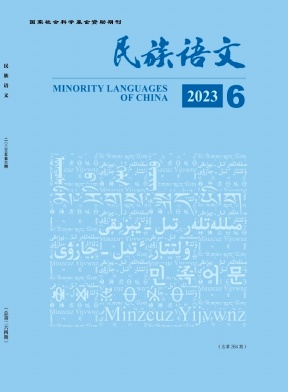
民族语文(不收版面费审稿费)
C刊,北核,AMI核心,武B+
CN中文-双月刊影响因子0.636
-
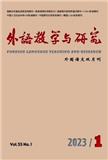
外语教学与研究(不收版面费)
AMI权威,C刊,北核,科核,武A+,国社科-合格
CN中文-双月刊影响因子2.145
-
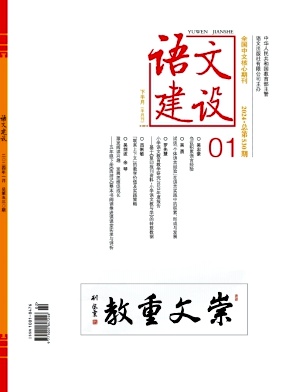
语文建设(不收版面费审稿费)
北核,AMI扩
CN中文-半月刊影响因子1.274
-
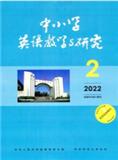
中小学英语教学与研究(不收版面费审稿费)
北核
CN中文-月刊影响因子0
-
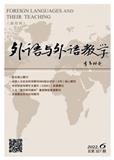
外语与外语教学(不收版面费审稿费)
C刊,北核,科核,AMI核心,武A
CN中文-双月刊影响因子2.483
-
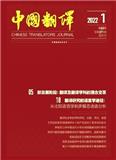
中国翻译(不收版面费审稿费)
C刊,北核,科核,AMI核心,武A
CN中文-双月刊影响因子3.156
-
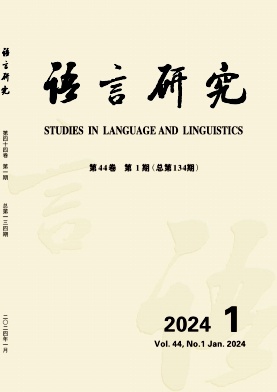
语言研究(不收版面费审稿费)
C刊,北核,科核,AMI扩,武B+
CN中文-季刊影响因子0.576
-
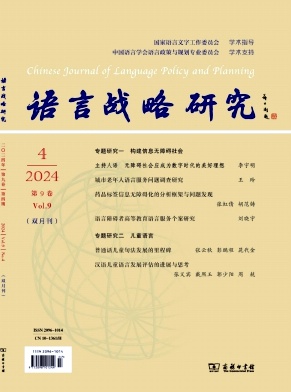
语言战略研究(不收版面费审稿费)
C刊,北核,武A,AMI扩
CN中文-双月刊影响因子2.785
常见问题
-
国际翻译与应用语言学期刊杂志社官网、联系方式是什么?
国际翻译与应用语言学期刊杂志社官网:https://www.igi-global.com/journal/international-journal-translation-interpretation-applied/175203
投稿网址:https://www.igi-global.com/submission/submit-manuscript/?jid=175203
投稿邮箱:caroline_zhaowei@sina.comfanlin@bfsu.edu.cnmuyy@hfut.edu.cn(官网邮箱) -
国际翻译与应用语言学期刊杂志是核心期刊么?
国际翻译与应用语言学期刊是核心期刊,级别是:AMI入库, 是:语言文字分类下的知网目次收录的期刊。
-
请问你们是国际翻译与应用语言学期刊杂志社吗?
我们不是《国际翻译与应用语言学期刊》杂志社。本站主要从事期刊信息展示与期刊推荐,不是任何杂志官网,直投稿件请联系杂志社。本站仅提供免费的学术指导、论文辅导、期刊投稿信息整理收集服务。
-
你们指导服务后可以保证文章被发表吗?
期刊发表的成功与否,主要取决于文章内容的质量。编辑老师会根据研究领域、创新性等多因素进行考量。我们会帮助您理解期刊的发表要求,助力提升发表几率,从而增加发表的机会。
-
晋级论文能否在报纸上发表?
在学术界,论文的发表往往被视为研究者职业发展的重要一环。晋级论文,即为了获得更高职称或学术地位而撰写的学术论文,通常需在专业期刊上发表。然而,许多人可能会问
